There is so much to see in Buenos Aires that it’s easy to become overwhelmed. Visiting Buenos Aires must be done slowly. It must be savored, neighborhood by neighborhood. I could write an epistle about everything I did in this most European of South American cities but sometimes, as they say, a picture is worth a thousand words. Thus, this story is (mostly) a photo travelogue of the week I spent in this fascinating Argentinian capital.
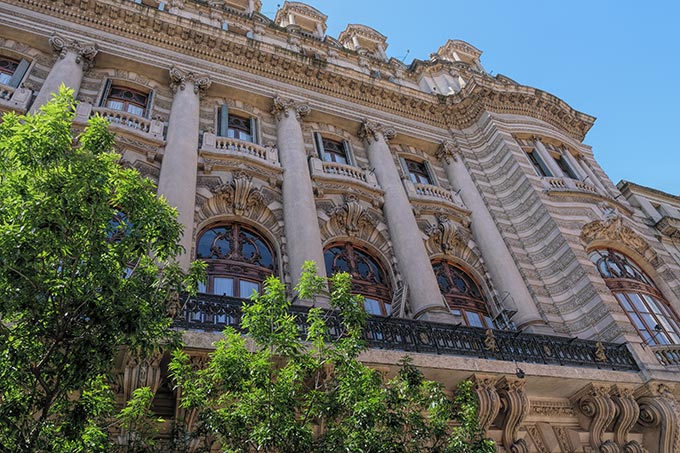
Begin in the Recoleta Neighborhood
I decided to stay in Recoleta, one of the most important neighborhoods in Buenos Aires. From its central location in the downtown residential area, I was able to walk to many of the neighborhoods I wanted to visit. Recoleta also offers “eye candy” for architecture aficionados. Not only is it home to some of the most stunning examples of Beaux-Arts mansions, it’s also the location of the famous Recoleta Cemetery, where the wealthy of Buenos Aires are entombed. Presidents of Argentina, politicians, generals, statesmen, diplomats, writers and journalists are among the many famous people who have been interred here, but perhaps none more famous than Eva Perón, the first lady of Argentina. The tombs are elaborately decorated with statues in styles ranging from Art Deco to Art Nouveau, Baroque, and Neo-Gothic.


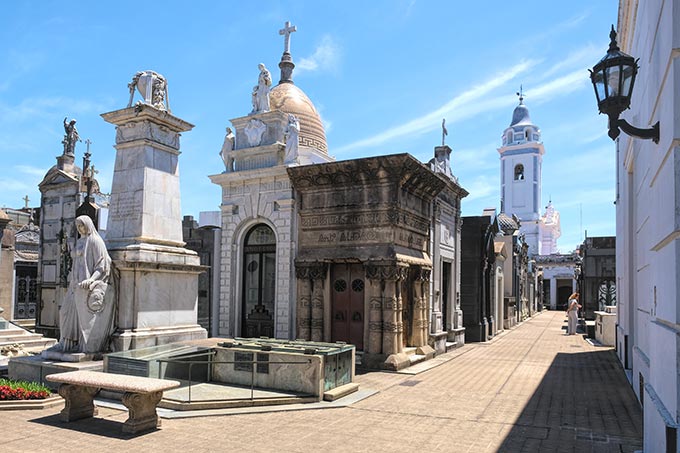

The city’s second oldest church, Basilica of Our Lady of the Pillar, is located adjacent to Recoleta Cemetery. It also marks the location of the popular weekend craft market at Plaza Intendente Alvear (often mistakenly called the craft market at Plaza Francia, which is an adjacent park). The market is a popular destination for musicians who perform for free, and for families, who show up in their Sunday best to peruse the crafts and enjoy a meal in an alfresco cafe.

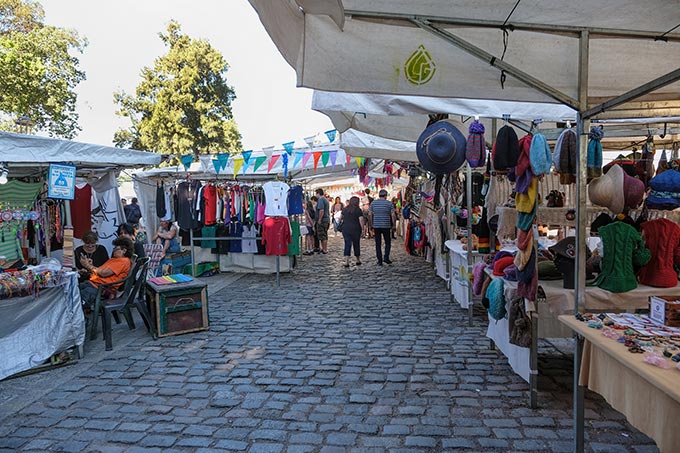
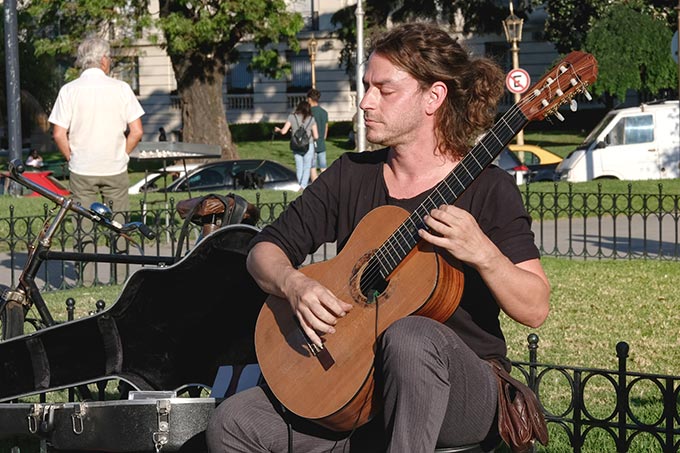
The entire Recoleta neighborhood is surround by enormous parks, all of which are worth a visit. Plaza de las Naciones Unidas (United Nations Plaza) features an enormous steel and aluminum sculpture of a generic blossom that represents all the flowers in the world. The petals move, closing up at night and reopening in the morning when it is struck by the sun’s first rays. Not only is Bartolomo Mitre Plaza a popular place to picnic and soak up the sun, it is a favorite with skateboarders. They launch from the top of the hill and race down the semi-circular Republica del Libano Avenue.
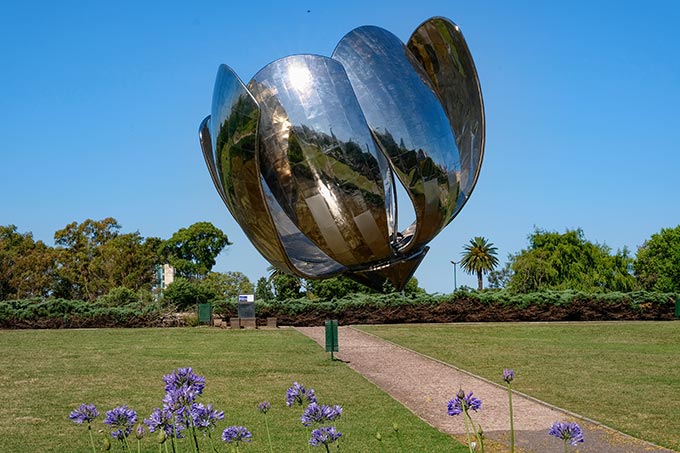
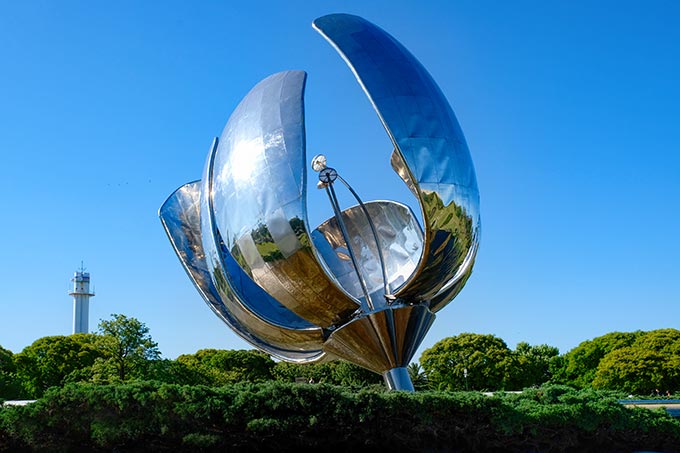
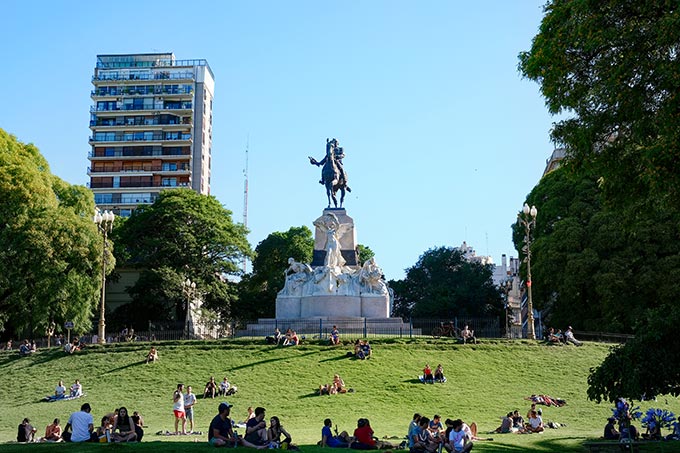

In the midst of all these attractions are two museums that are worth a visit. Kids will love the Participatory Science Museum, where it is forbidden NOT to touch the displays. Adults will appreciate the Museum of Fine Arts, a converted drainage pumping station that holds one of the largest public art collections in all of Latin America.


Palermo and Palermo Soho Neighborhoods
The Palermo and Palermo Soho neighborhoods are just north of and within walking distance of Recoleta. The Palermo district, aside from being the preferred abode of the wealthy class, is best known for its parks. Notable among them are the Japanese Gardens and the Bosques de Palermo, a vast park that features four lakes and a large rose garden. Between them stands the magnificent Monument to the Carta Magna and Four Regions of Argentina. A bit further west is the 17-acre Carlos Thays Botanical Garden. In addition to sculptures, monuments, ponds, and five greenhouses, it features an indigenous Argentinean garden, as well as gardens designed in Oriental, Roman, and French landscaping styles.
Plaza Italia, which stands at the entrance to the Botanical Gardens, delineates the border between the ritzy Palermo district and the trendy neighborhood that locals call Palermo Soho. Formerly a downtrodden area of the city, it is rapidly becoming gentrified. Artists, designers, and musicians moved in and infused the area with new life. Cafes, and bars soon followed. Today, a smattering of sex toy shops mingle with trendy designer shops. And art is plastered on every facade.
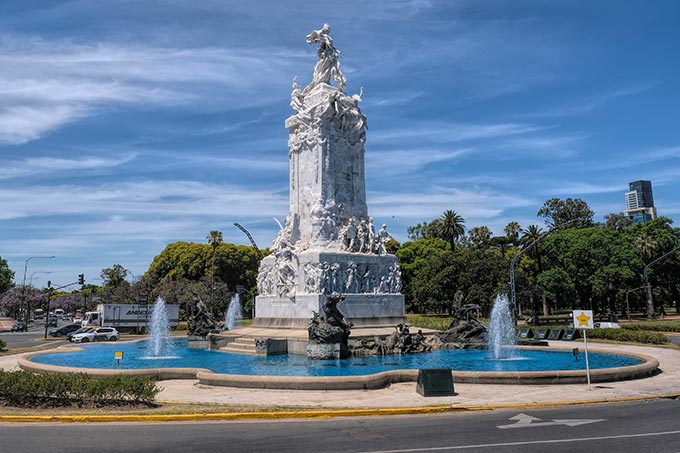


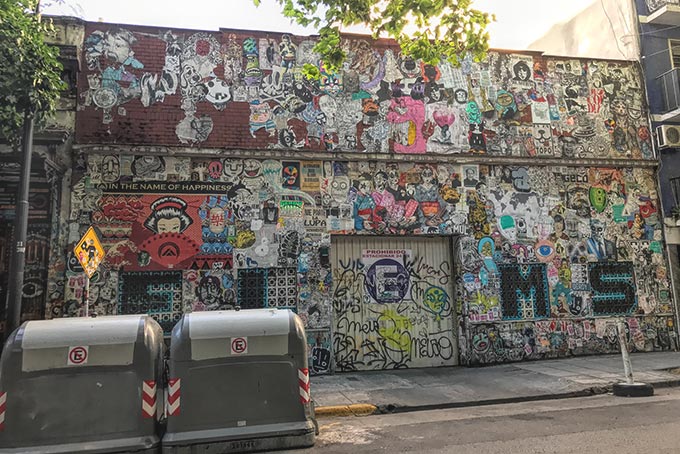
San Martín Neighborhood
To the southeast and also within walking distance of Recoleta is General San Martín Plaza. Old-growth trees create a shady canopy over this large, peaceful park, and the elevated hill upon which it sits offers a great view of The Monumental Clock Tower. It was formerly known as the English Clock Tower because it was a gift from the local British community to the city in commemoration of the centennial of the May Revolution of 1810. Be sure to leave a little time to wander around the San Martín neighborhood, with its shop lined pedestrian walking streets and gorgeous mansions.
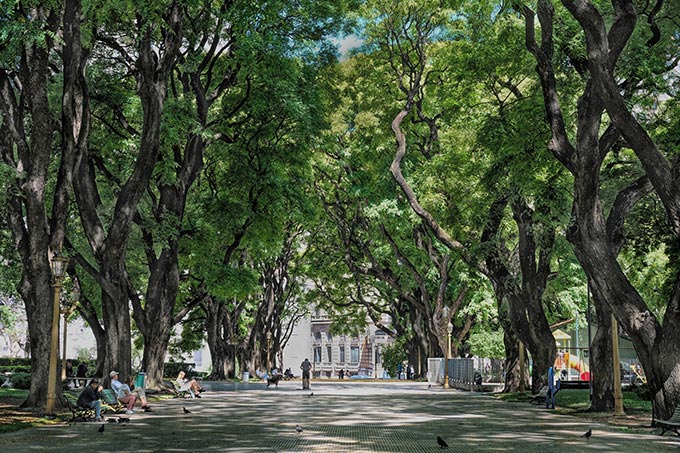
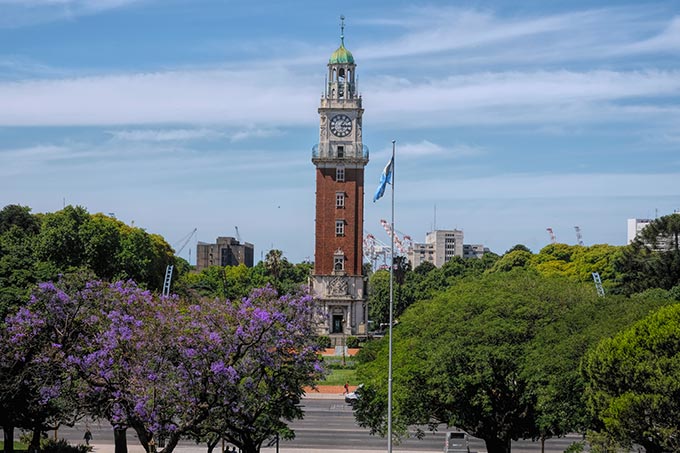
Art in the Subte (Metro) Stations
The Buenos Aires attractions that are detailed below were further away from Recoleta, which meant I needed to use the Subte (Metro) rather than walking. Imagine my surprise when I discovered gorgeous artwork in the underground. Though I only saw a couple of different stations, I’ve since learned that many Subte stations feature such artwork.
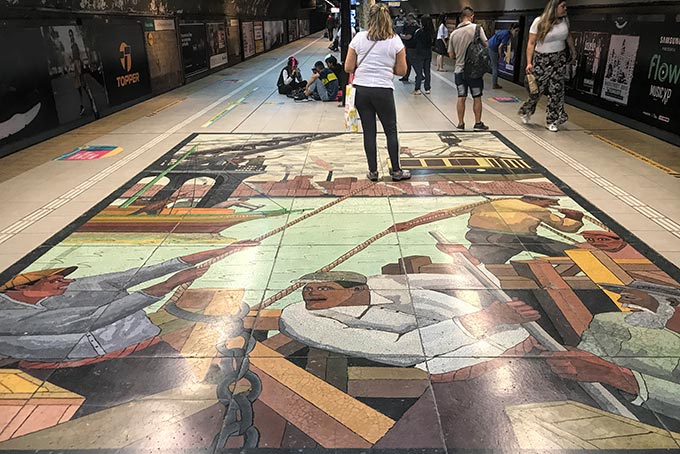
Avenida 9 de Julio (9th of July Avenue) and Plaza de Mayo
Every list of things to see in Buenos Aires should include a walk down the broad, tree-lined Avenida 9 de Julio. This 1.9 mile long thoroughfare honors Argentina’s Independence Day, July 9, 1816. Begin at El Ateneo Grand Splendid Bookstore, located slightly to the west of Avenida 9 de Julio. Originally an historic theater that was home to famous Tango artists, it was converted in 2000 to what National Geographic calls the most beautiful bookstore in the world. Continue on to Avenida 9 de Julio to check out the historic Teatro Colón, which hosts operas, classical music concerts, and ballet. Once at Teatro Colón, you can’t miss the Obelisk, which rises 221 feet high in the center of Plaza de la República. Finally, at the Obelisk, turn onto Avenida Diagonal Norte. If you’re hungry by now, you’re in luck! The famous Cafe Tortoni is just a couple of blocks off Diagonal. With a full tummy, you can easily continue on to Plaza de Mayo. This square is home to Casa Rosada, the pink mansion that serves as the executive mansion and office of the President of Argentina.
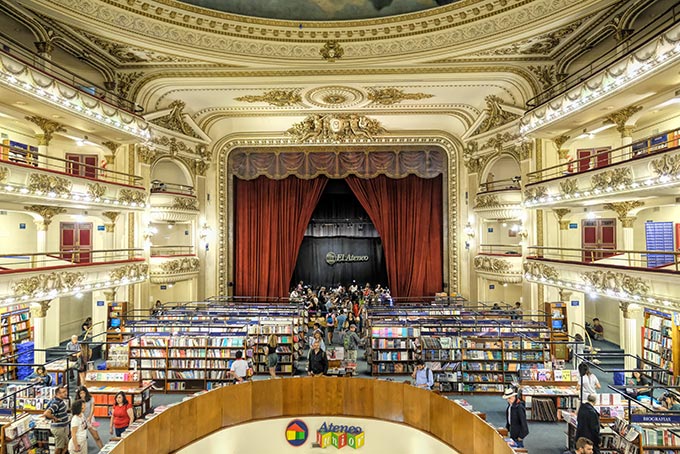

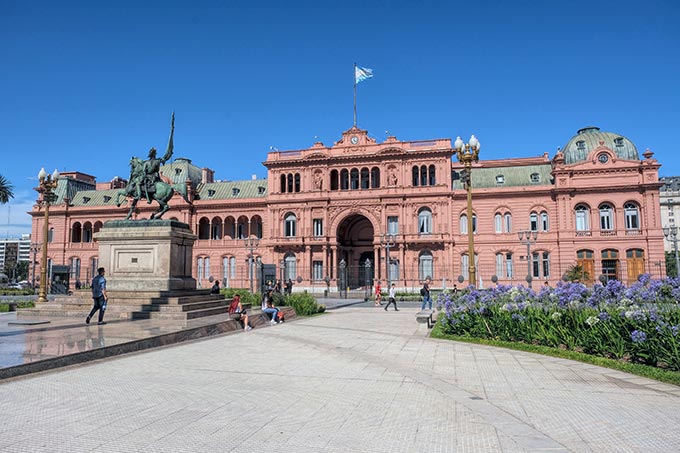
The New Puerto Madero Neighborhood
Behind Plaza de Mayo and the Presidential Palace is the newly developed neighborhood of Puerto Madero. Two historic ships, the Frigate Presidente Saramiento and the Sloop Uruguay are moored in the river. Both offer tours for a small admission fee. Walk across the sleek Puente de la Mujer (Woman’s Bridge) and rest a while at the edge of the lagoons that sit between the coast and the La Plata River. Birders will especially appreciate this area. There’s good reason that two of the three lagoons in this area are named after birds.
If you’re ready for a late afternoon cool beverage by this point, once again you’re in luck. The historic Bar at the Hotel Faena is just a block away. Constructed in 1911 with red bricks shipped from Manchester, England, the building was originally one of the largest wheat mills in the country. With the closure of the nearby port in 1998, the mill was abandoned. Developers repurposed it into the five-star Hotel Faena, rescuing the historic structure from certain demolition. I spent an absolutely delightful two hours at the Library Lounge, surrounded by red velvet draperies and crystal chandeliers, comfortably sunk down in a tufted leather sofa, while servers doted on me.


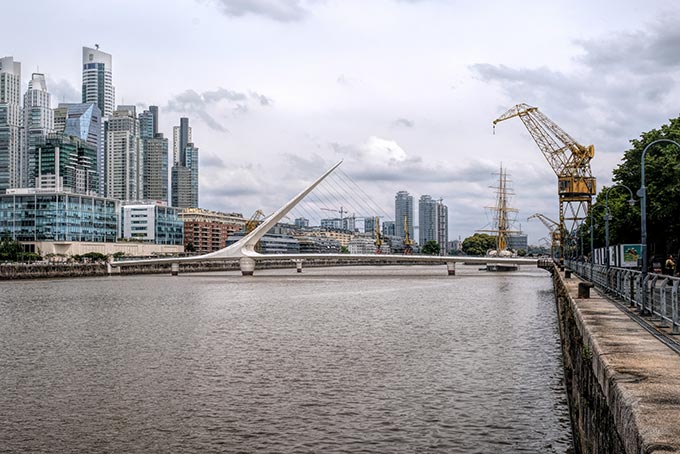
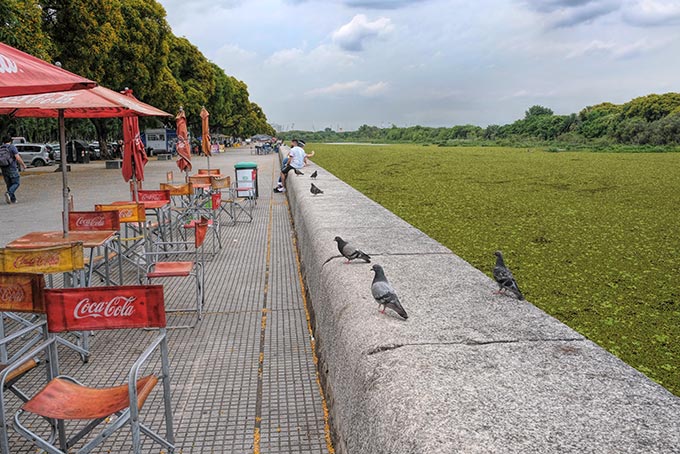
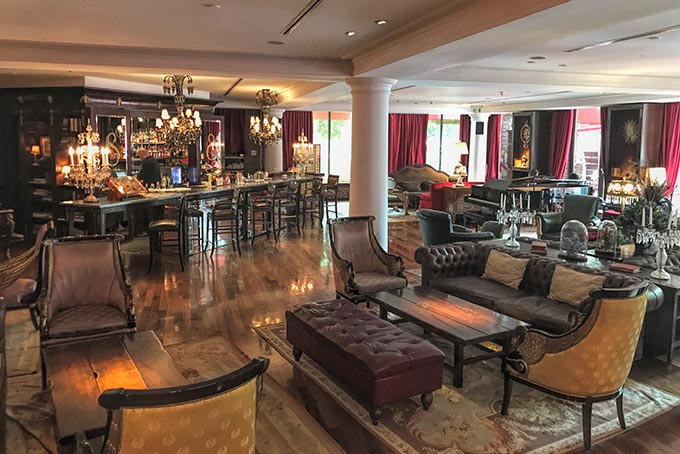
La Boca Neighborhood
Finally, visiting Buenos Aires would not be complete without seeing the La Boca neighborhood. Located directly south of Puerto Madero, La Boca was built by Italian immigrants, many of whom emigrated from Genoa. Residents of La Boca always been known for their independent spirit. In 1882, they raised the Genoese flag and seceded from Argentina. Then President Julio Argentino Roca personally tore it down. Still today, the community often mounts protests against the government. Houses and shops in the barrio also reflect individuality. They are painted in bright colors and Tango artists perform in the pedestrianized streets for tips. Tango is an important influence here and La Boca is one of the best places in the city to attend a Tango show. But be aware that this is a poor neighborhood. Those who drink to excess or wander outside the main streets after dark risk becoming victims of petty crime.
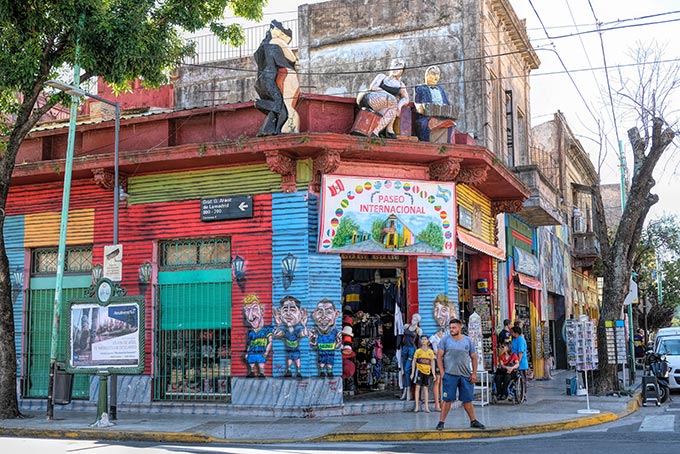
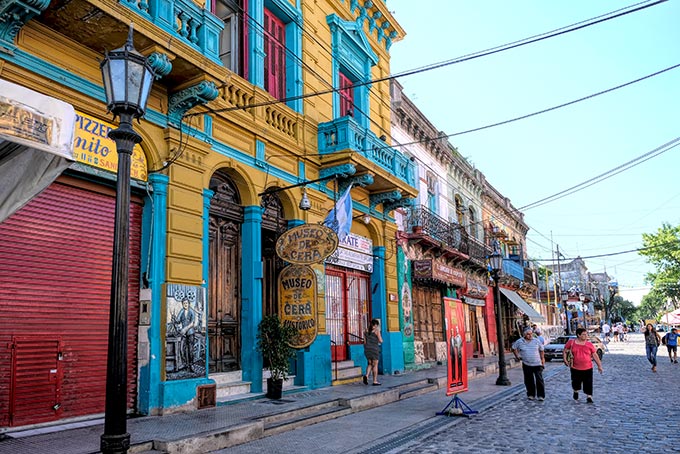
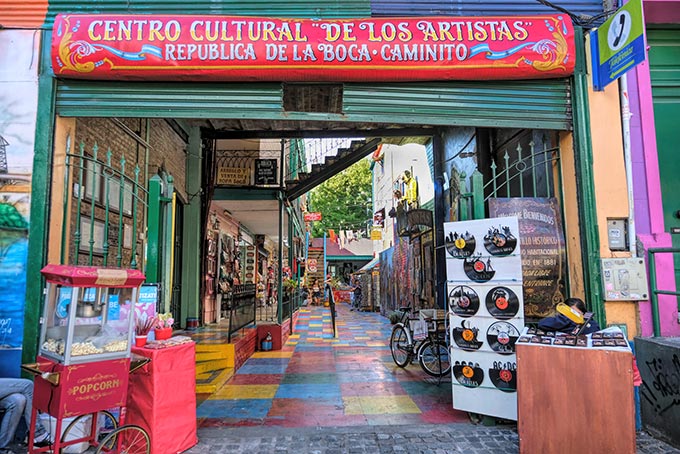
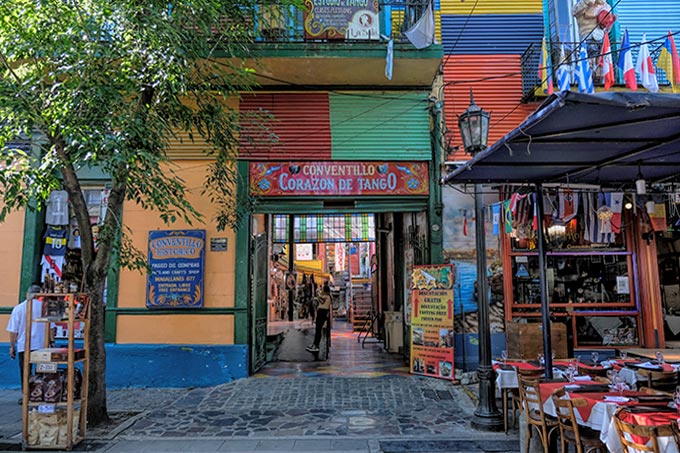
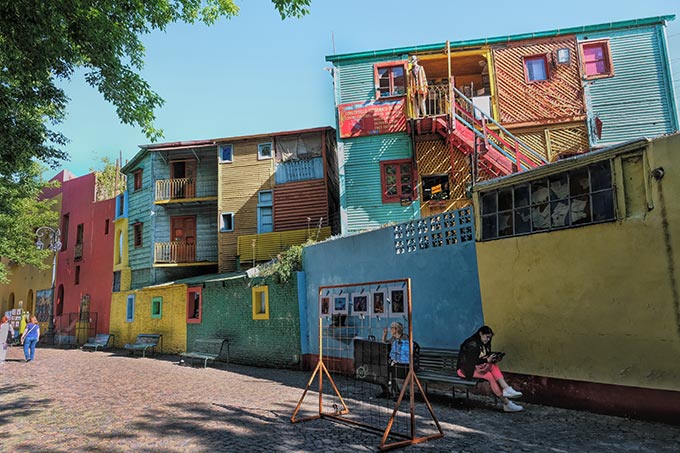
Friendly People in Every Neighborhood…
I’ve focused on the attractions, but there is one more thing that makes Buenos Aires one of the best large cities I’ve ever visited. In every neighborhood, wherever I went, the Argentinian people were incredibly friendly. The photo below says it all. These women and their dog were delighted to pose for a photo, and it was the same wherever I went.
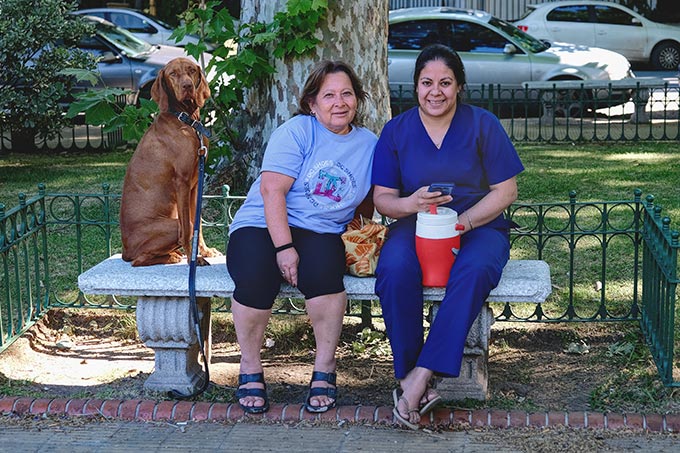
And, I’ve only Scratched the Surface…
Buenos Aires may be the best known destination in Argentina, but it’s hardly the only one worth visiting. I’ve only scratched the surface with my roundup of what to do in Buenos Aires, so for anyone considering an extended visit tI highly recommend reading this Argentina Travel Guide, which is crammed full of all the information you will need to make the most of your Argentine holiday.
You may also enjoy:
Magnificent Monte Fitz Roy in El Chalten, Argentina
Easter Island – One of the Most Spiritual Places on Earth
Torres del Paine National Park in Chile – One of the World’s Beautiful Places

Wow, Its amazing article you shared with beautiful photography and I loved viewing your beautiful photo of destinations, will surely visit after the pandemic situation. Thank you for such useful informative post keep it up.
Thanks so much Sonam jha.
I loved reading and viewing your beautiful photo-log of Buenos Aires, Barbara. The architecture looks amazing. I know I could spend hours in that incredible book store, and probably not read anything, but soak up the beauty and immenseness of my surroundings! A definite must-visit future travel location!
Ah yes…another place for the travel wish list. I know what you mean. After 100+ countries, my list just keeps getting longer.
A brilliant blog. I love the photos and narration of what to see around town. Perfect content for what I enjoy doing. Happy travels x
Thanks so much Ancilla. Glad you enjoyed it.
I lived in Buenos Aires for two years in the 90s, it was fun to see what it looks like today.
Thanks so much John. Glad you enjoyed it.
Where are you now? You mentioned your last residence in a posting some time ago, but I don’t recall. Not fun or safe to travel now with a virus affecting the whole world plus all the restrictions, is it?
Hello Nancy. I live in Thailand and have been home since the virus reared it’s ugly head. Initially, I suspended publishing of travel content, as I felt it was not what people wanted to read. However, so many of my readers have asked me to continue that I ultimately decided to do so. Because we are all trapped at the moment, I am striving to be inspiration for all my armchair travelers right now.
I find it impossible to produce good quality content while I travel, so I am always weeks (sometimes months) behind, with a backlog of stories to write. What you are reading now are articles about places I visited from mid-2019 through January of 2020. Next up are stories about the Caucusus region (Georgia, Armenia, and Azerbaijan). Once they are finished, I will be writing about domestic travel in Thailand until we can all travel again. We are very fortunate to have eliminated COVID-19 in Thailand, so domestic travel is quite safe here.